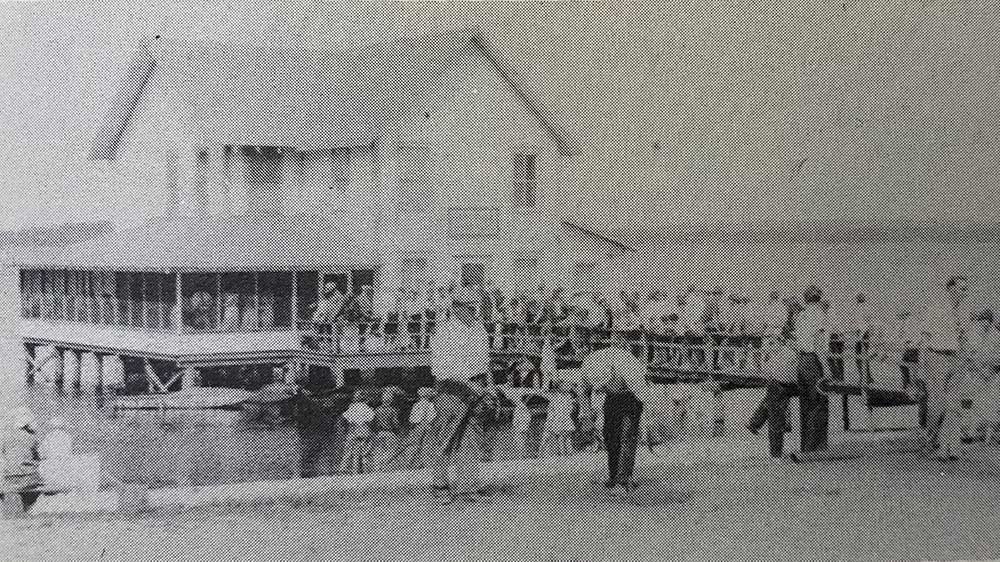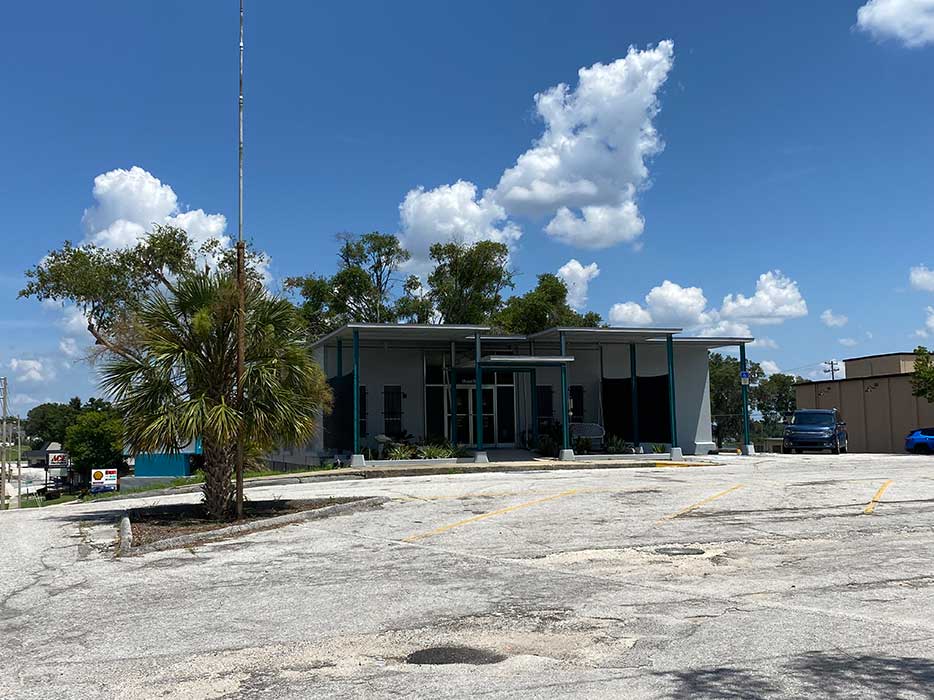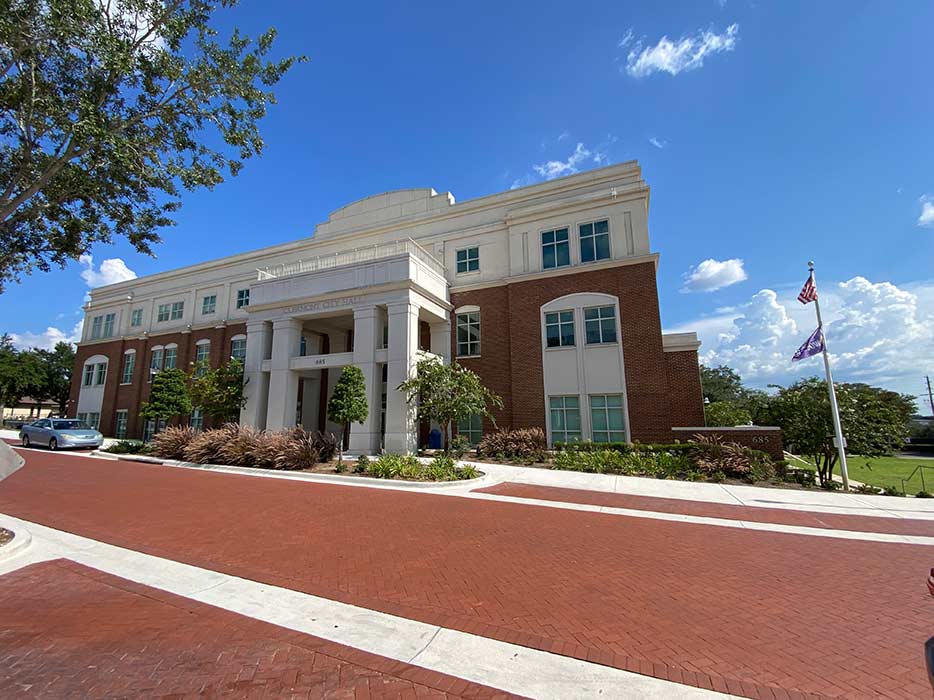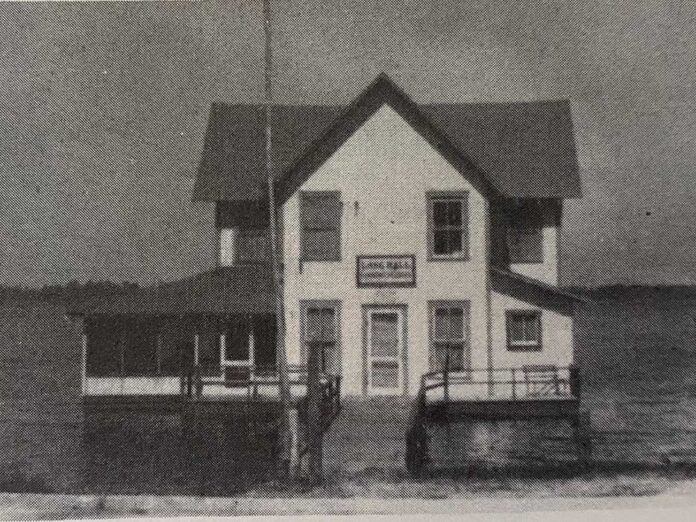By Chuck Seaver, South Lake Tablet
The City of Clermont is rich in history, especially in the areas of West Montrose Street and the surrounding areas where the original incorporation included 2,000 acres that would become the Town of Clermont. Citizens of the community gathered on June 9, 1891, at 2pm to sign the documents required for incorporation. From the beginning of the town’s history to the present, there are four known locations of Clermont’s City Hall building.

The first city hall, built in 1908, was located on the shores of Lake Minneola at the foot of Eighth Street, in the approximate location of the current Eighth Street pier. The building, owned by the Woodman of the World organization, extended over the lake by several yards. The first floor served as the city hall, civic center, dance hall, bathhouse and marina for many years. At times of high water, the floor was just a foot above the lake. The roof served as a social gathering spot for swimmers and was often utilized as a diving platform. The Masonic Lodge and the Order of the Eastern Star used the second floor as their meeting and lodge room. In 1922, citizens of Clermont were asked to contribute financially to the work of putting the building back into shape for public gatherings; $250.00 was needed to seal, paint, add additional lighting and replace windows. It is unclear whether the funds or the work was ever completed. The building was torn down in 1933 after 25 years of service to the townspeople of Clermont.

In August of 1924, voters approved building a new city hall, complete with police and fire headquarters. The cost for the two-story concrete and stucco building was $27,000.00. A figure that equals $463, 209.00 in today’s inflation index. Architectural plans were prepared by Ben Irby for the two-story building at the southeast corner of Eight Street and Desoto Street. Construction was completed in 1926 by Hayes and Kroeger, Contractors. The first floor contained rooms for the city clerk, storage, and vault space, as well as a room for the Chamber of Commerce. On the second floor was the town council chamber and living quarters for the fire chief. The basement area contained storage for the new LaFrance fire truck, room for the police headquarters and the city jail.
Tommy Carlisle, a long-time Clermont resident, and former Clermont police officer, recalls working in the two-story structure in the early 1960’s. By that time, a police dispatch room and city courtroom had been added to the interior of the city hall. The building had no comfort control abilities other than window unit air-conditioners throughout and windows that had the ability to be opened and closed. The fire department, which was all volunteer at the time, maintained the one-engine fire stall. Carlisle recalls walking the Montrose Street business areas at night to check door locks and windows in the alleyway behind the businesses. “We did not have portable two-way radios back then that you could carry with you when out of the patrol car. Instead, there was a single red-light bulb mounted on a tall pole that was affixed to the roof of the Roe building located at the northeast corner of Eight Street and Montrose Street. The dispatcher, located in city hall, would turn the light on in hopes of the officer seeing the light and acknowledging that the dispatcher needed to get in touch with the officer,” says Carlisle. In 1963, Carlisle recalls working with only three additional police officers who, at the time, all worked from the Desoto Street location. Chief Prentice Tyndal, Donald Hildreth, Mitchell Rogers and Carlisle not only patrolled the streets of Clermont but acted as part-time jailers as well when they housed a judicial system guest. The police department, fire department, and city council chambers were moved to a new building located at 882-92 West Desoto Street in 1964.

The Desoto Street city hall remained in place until 1972, at which time the offices and staff were moved to the former First Federal Building located at 1 Westgate Plaza. A split-level building that remains in place today, next to the Clermont Bowling Alley. The new city hall utilized the ground floor as offices and customer service abilities for the water department, city manager’s office, city clerk’s office and other related city services. The lower level was utilized as private office space to the public. Attorney George Hovis occupied the office space for many years before his retirement.
The Westgate Plaza location was accommodating to the needs of the city through the mid 1990’s. However, killer winter freezes in the 1980’s and 90’s that brought the end to the citrus industry in Central Florida led to large parcels of land being sold for development. The development brought explosive growth to the South Lake County area, including Clermont. The Lake County School Board at the time called the growth a crisis. It soon became evident that additional city staff and services were needed to accommodate the needs of the rapidly growing city. These additional needs included a new and much larger city hall building.

In December 2003, the most recent city hall, located at 685 West Montrose Street, was opened to the public and ready for service. The three-story, concrete and brick building built on properties once owned by the Cooper and Bishop families, pioneer families of the Clermont area, is complete with modern amenities that include a large city council chamber, easy access counters for customer service, planning and building departments, utility services, city finance department, the city manager’s office and a green area that includes public benches, plenty of grass and beautiful landscaping. The majestic structure is complete with a third-floor balcony that overlooks historic downtown Clermont. The balcony is utilized annually by event judges to observe the city’s holiday parade in December. The judges have a front row and above-head view from the balcony, making it easy to pick out the parade favorites.
The public parking area on the south side of the structure is complete with large, graceful oak trees and electric vehicle charging facilities. Much of the parking area includes portions of land that was once occupied by the original Cooper Memorial Library building. A wood-framed structure that has been preserved and is currently located at the Clermont Historic Village, 490 West Avenue.
Perspective and needs change consistently with time and growth. The City of Clermont has evolved from a bustling, yet small community that depended heavily on horticulture, logging, and fishing in its earliest days of existence to a growing city that still has a small-town feel in many ways. Each of these city hall locations are within walking distance of each other. With the exception of Westgate, three of the sites are located within the historic downtown district. Take a walk and visit the many shops, stores, restaurants and the current city hall building for a glimpse into Clermont’s fantastic history.






